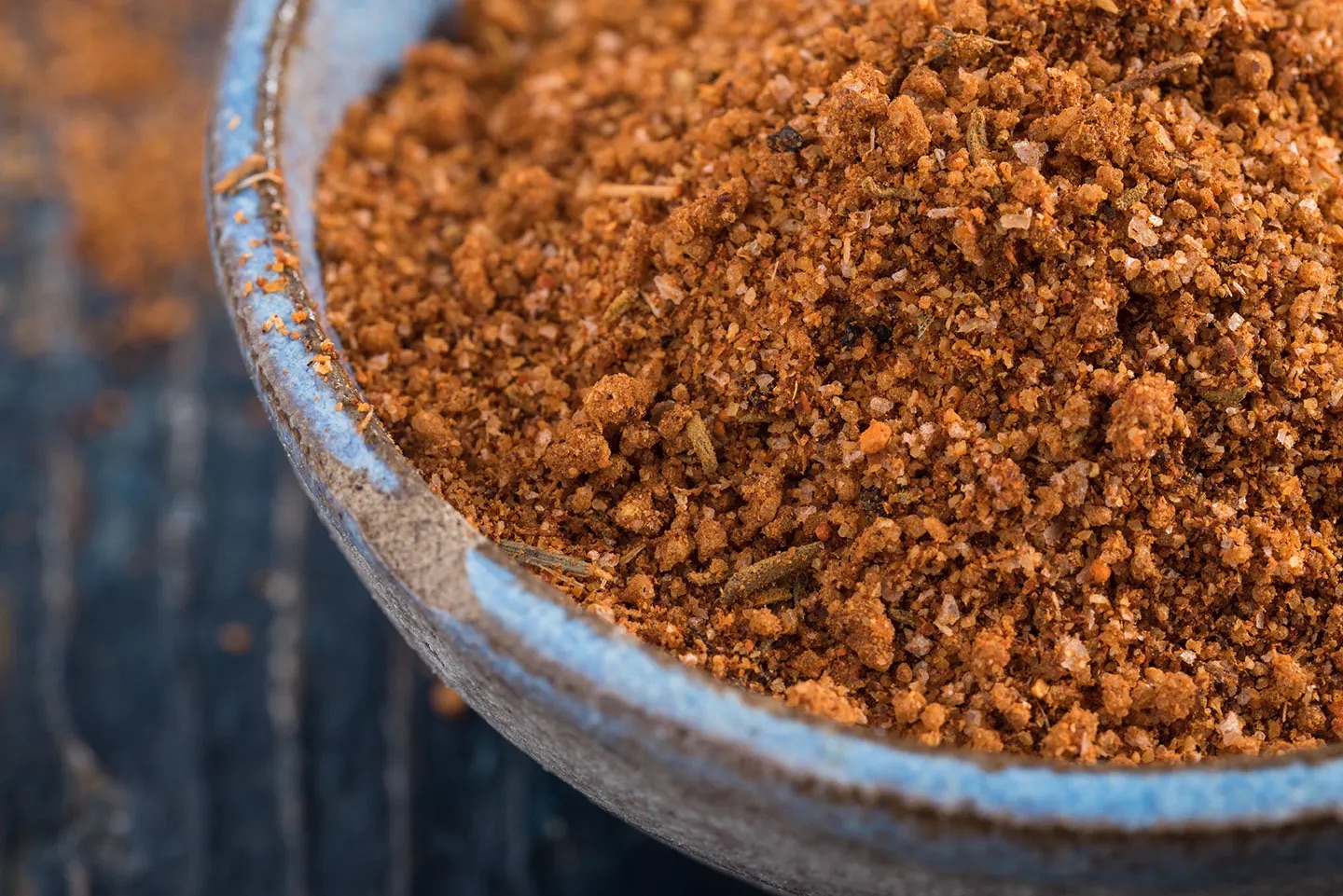TRADITIONS, TIPS, RECIPES AND MORE
THE DRY RUB: A TEXAS BARBECUE INSTITUTION
Throughout the South, there are plenty of regional rivalries about barbecue, and each region usually claims it has the secret to the perfect recipe. In some places, you will hear people debate whether vinegar or tomato bases are the ideal starters for barbecue sauces. But in Texas, the debate is not about the sauce but the perfect dry rub.
Dry rubs are a bedrock staple of Texas barbecue. They are as crucial to the flavor as the different combinations of wood used to smoke the meat. Let’s take a closer look at the finer points of Texas dry rubs.
FIRST, WHAT IS DRY RUB?
Chefs of any cuisine will tell you that seasoning is the key to making delicious meat, and that’s undoubtedly true for barbecue. If you don’t correctly season your meat (especially your barbecue), you’re in for a tasteless meal. When it comes to Texas barbecue, a dry rub is your ticket to the perfect flavor.
A dry rub is more than just a sprinkling of salt and pepper. Dry rubs are a combination of sweet and savory spices that, when rubbed on the meat, coat it thoroughly and give it a robust flavor. By rubbing the mixture liberally into all sides of the meat, you ensure the flavor is evenly distributed (no bland spots here).
A BRIEF HISTORY OF THE DRY RUB
Dry rubs have been used for culinary purposes for centuries. Historically, people used them to cure and preserve meat long before modern refrigeration techniques came along. One of their routes to the Texas table followed the German, Czech and other central European immigrants who flocked to the state in the early 19th century.
With these immigrants came their traditional methods for preparing their famous smoked meats, which often included spices and rubs as preservatives. Combined with other influences, these methods became part of the Texas barbecue institution, eventually becoming the dry rub.
THE FLAVORS USED IN A DRY RUB
If you’ve ever wondered how to make the perfect dry rub, here’s the thing: The perfect dry rub is what’s perfect for you. Many barbecue masters will take their dry rub recipes to the grave, and there is plenty of debate over who has the key to the best recipe. Still, if you are ready to start making your own dry rubs, here are a few pointers you can keep in mind.
As with most recipes, the base seasonings for dry rubs are salt and black pepper. Many people follow a 50/50 rule when adding these to their rubs, meaning that you should add equal parts salt and pepper to your rub. Some chefs even stop at salt and pepper, adding no additional seasonings to the mix.
But if you are more adventurous, there are plenty of other herbs and spices that you can consider adding to your dry rub to give it some extra flavor. These include things like paprika, garlic powder and onion powder. For those who like a hotter flavor, chile powder, cayenne pepper and similar seasonings can enter the mix. Or, if you want sweetness, brown sugar is the key. However, when combining flavors, be careful not to add too much of one spice. Remember, the dry rub will cover the meat, and you don’t want to overpower the flavor of the meat. You also don’t want so much of one spice on your meat that it overpowers the rest of the flavors (or overpowers your taste buds).
USING DRY RUBS
With a dry rub, you add two primary elements to your barbecued meat: texture and flavor. The texture comes from the rub evenly coating the meat, creating something of a casing that can help the meat stay tender on the inside while the outside has an element of crispness. However, it’s how you apply the dry rub that matters.
The key is to ensure that the rub evenly coats the meat and, more importantly, that you rub it in. Rubbing the rub into the meat allows the flavor to penetrate, adding depth to the flavor. When working with chicken, many chefs choose to season both the skin and the meat under it.
Some barbecuers apply their rubs the day before they smoke their meats, allowing them to season overnight. Others prefer to do it on the day of preparation. A good rule of thumb is to give your meat a little while to absorb the flavors before you add it to the smoker.
MAKE A DRY RUB YOUR TEXAS BARBECUE TRADITION
At Hutchins BBQ, we honor the dry rub as any good Texas barbecue master should. If you want to start making your own dry rubs, there’s no better time to start. Just give yourself time to learn, spare some room for experimentation, and don’t be defeated if your first batch is not quite what you want. With enough time and patience, you’ll soon have the perfect dry rub for your barbecue that your friends and family will love.
